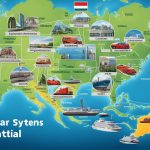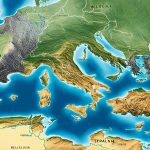In this article, we explore the economic comparison, quality of life, and living standards of Australia, the USA, and Italy. We aim to reveal the key aspects that make each country unique. We look into GDP, healthcare, education, and lifestyle to give you a clear picture.
Overview of Geographic and Demographic Context
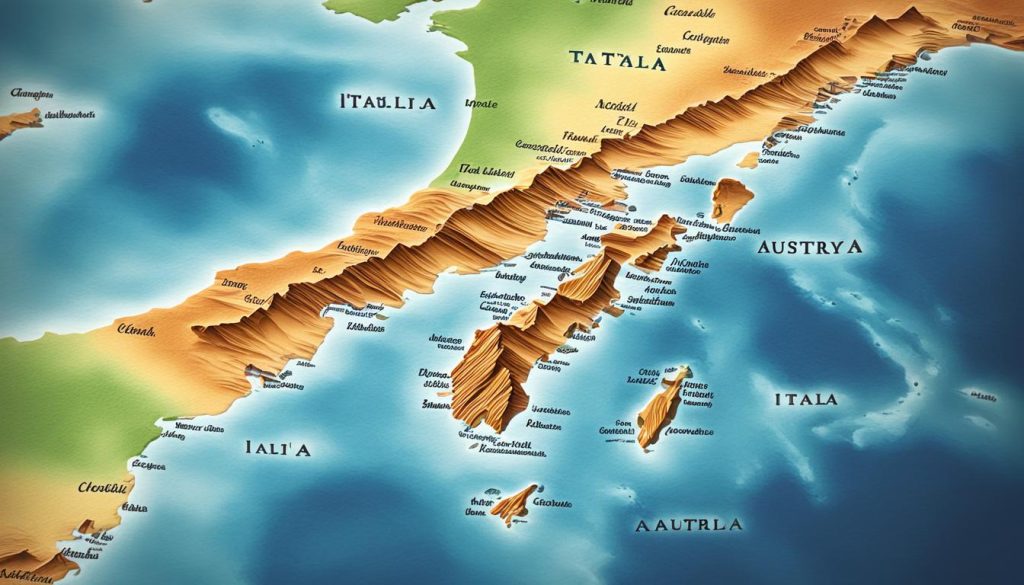
When comparing Australia and Italy, we see big differences in size and population. These differences highlight how their cities grow and how people spread out.
Size and Location Differences
Australia is huge, covering 7,741,220 square kilometres in the Australia/New Zealand region. In contrast, Italy is much smaller, with just 301,340 square kilometres in Southern Europe. Australia’s vast areas range from beaches to deserts. Italy, though smaller, boasts beautiful Mediterranean sights.
Population Dynamics and Urbanisation
Australia has about 26 million people, while Italy’s smaller space is home to 59 million. This means Australia has fewer people per square kilometre, about 3.4, compared to Italy’s 195.6. Canberra and Rome are both important cities. Yet, they show how different the two countries are in terms of how many people live there and how their cities develop.
- Canberra highlights how Australia plans cities to fit with nature, supporting smart growth.
- Rome shows Europe’s history while meeting the needs of a busy capital with many people.
Compare Economy and Quality of Living Between Australia, USA and Italy

Comparing the economy and living quality in Australia, the USA, and Italy is complex. We must look at different factors to understand living standards in each country. Economic indicators like the jobless rate, price increase rate, and average earnings help us start our analysis. These reveal much about life in these lands.
Economic Indicators Overview
Studying key economic indicators reveals a lot about a country’s financial health and issues. Australia stands out with a jobless rate of only 3.7% and a 6.59% increase in prices. With an impressive average income of USD 60,840, it shows a strong economy. On the other hand, Italy faces more challenges. It has a jobless rate of 8.1% and prices rising at 8.20%. Its average income is just USD 38,200. This greatly impacts its economy and people’s confidence in spending.
Comparing Quality of Life Parameters
- Political Stability: Vital for a thriving society, Australia’s political stability is high with a score of 89. It shines as a model of consistent governance. Italy, though stable at 64, shows it could improve in political faith and longevity.
- Civil Rights: Civil freedom is key in developing a positive living environment. Australia scores 94 in civil rights, far ahead of Italy’s 66. This highlights a difference in ensuring and practicing personal freedoms.
- Health Services: Good health services are crucial for quality of life. Australia leads with 87, but Italy is not far behind at 84. This points out slight differences in their healthcare systems.
Looking beyond just economy, Australia and Italy’s societies are richly layered. They include political steadiness, the energy of civil freedoms, and health service strength. Together with climate and living costs, these elements paint a fuller picture of life quality.
Analysing Political and Economic Stability
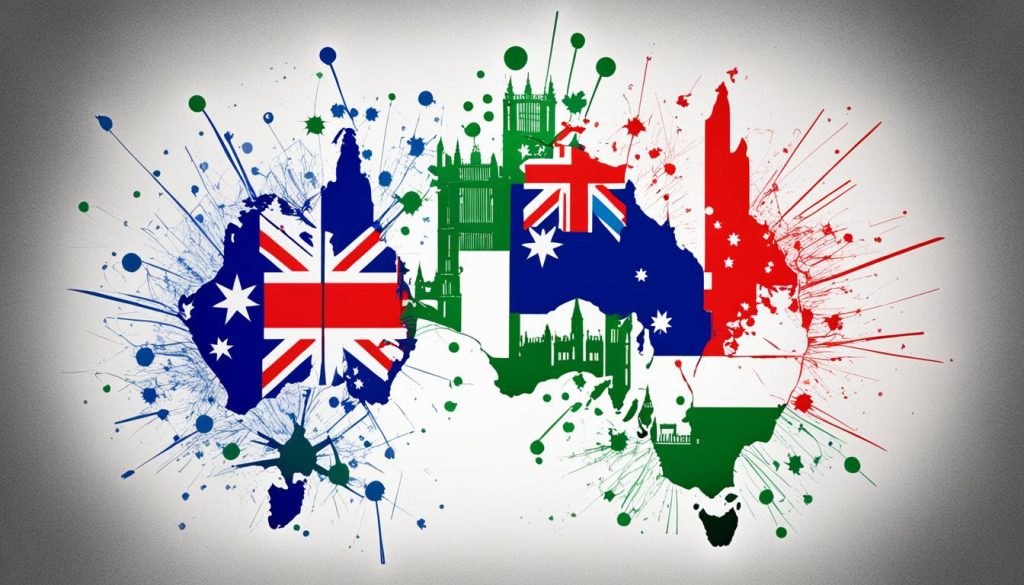
A nation’s progress leans on its governance framework. Through a study comparing political systems and economic results, we delve into the aspects that set Australian and Italian governance apart. This examination sheds light on their stability and how they manage their finances. The foundation of Australia’s parliamentary democracy and Italy’s parliamentary republic is pivotal. These systems support their political and economic steadiness, influencing their global position and citizen welfare.
Governance Forms and Their Impacts
Governance and stability are key to a nation’s success. Australia, with its parliamentary democracy, ensures stability through checks and balances. Italy’s parliamentary republic structure, while different, still secures its place in keeping orderly government operations.
Government Debts and Financial Health
How a country manages its debt shows its financial health. Australia’s debt-to-GDP ratio indicates good fiscal management. Italy, however, faces challenges with a higher GDP ratio. This affects its economic flexibility and strength.
The corruption index matters to investors. It shows how stable an economy might be. Australia ranks well, thanks to its fight against corruption. Italy’s score suggests it has work to do in governance and building trust with investors.
- Governance type and political stability ratings
- Comparative analysis of the government debt to GDP ratio
- Financial health assessment through international indices
Legal Systems and Civil Rights
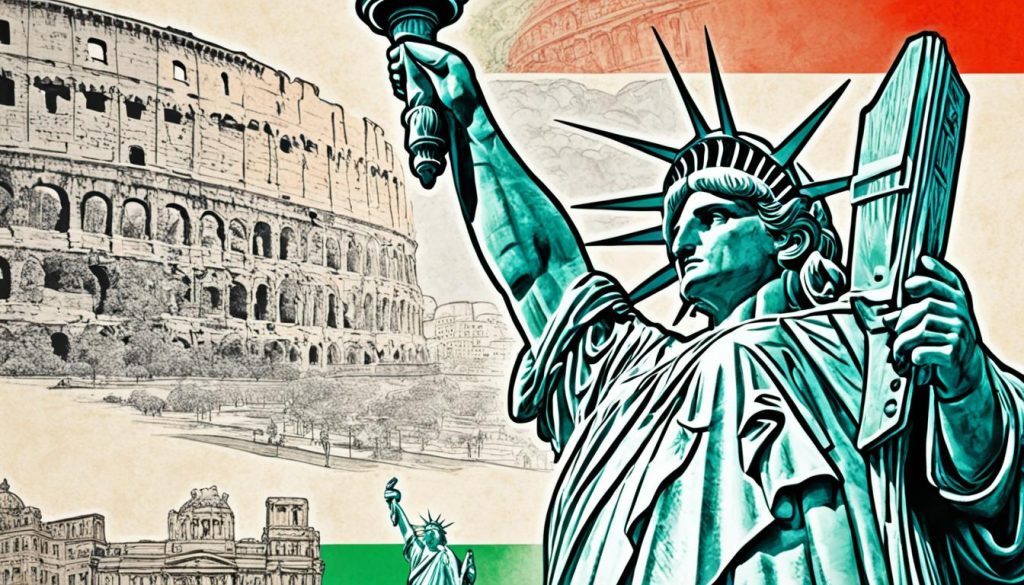
Supporting democratic participation in a country’s government is vital for civil liberties. In this, Australia and Italy shine, showcasing strong legal systems that focus on rule of law and regulatory quality. This is crucial for justice and preserving individual rights.
In Australia, the law is strictly followed. This ensures everyone, including the government, is accountable. The country ranks high globally for its legal system’s effectiveness and openness. Active, inclusive democratic participation shows the country’s commitment to civil rights.
Italy’s legal system, rooted in Roman law, values the rule of law too. Its regulations are precise and clear, making laws fair for all. Italy also values democratic participation, despite its complex governmental system. This promotes involvement and representation at all levels of government.
Looking at both countries, it’s clear they focus on the rule of law. They differ in some aspects of law and democracy. But, these differences don’t diminish their commitment to civil liberties.
- Rule of Law: Fairness and equality under impartial laws.
- Regulatory Quality: Clear and efficient rules for transparent governance.
- Democratic Participation: People taking part in politics, ensuring leaders represent them.
The state of a country’s democracy and civil rights depends on its legal principles. Australia and Italy work hard to create a legal environment that promotes freedom and justice. They aim for a stable society and the well-being of their people.
Assessing Healthcare Infrastructure
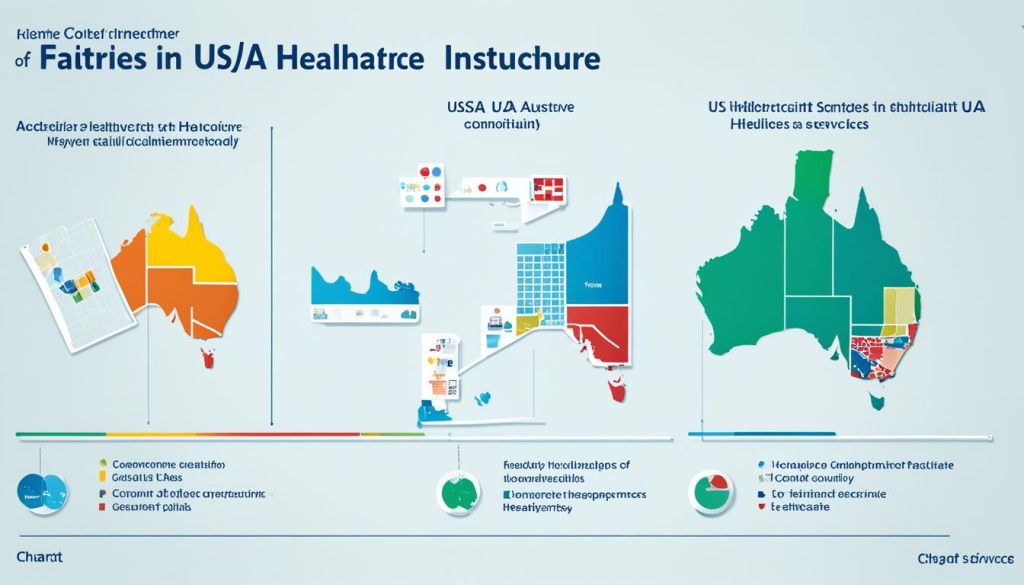
Evaluating healthcare in Australia and Italy shows how they serve medical needs and handle public health. Looking at hospital beds and doctor numbers helps us understand quality care. It’s also about handling long-term illnesses and stopping diseases.
Hospital Beds and Physician Ratio
We measure healthcare quality by things like hospital bed numbers. Australia has 3.84 beds for every 1,000 people. Italy has a bit fewer, with 3.14 beds. This shows how ready they are to look after patients.
How many doctors are available is also key. In Australia, there are 4.10 doctors for every 1,000 people. Italy has slightly more, with 4.13. This shows they’re both set up well to care for their people.
Managing Chronic Conditions and Diseases
Looking after chronic diseases is crucial for quality healthcare. Both countries have a diabetes rate of 6.4 percent. But, they differ in smoking rates. In Australia, 13.6 percent smoke. In Italy, it’s higher at 23.1 percent. This tells us about the health of their people and the need for health campaigns.
Evaluating Safety and Security
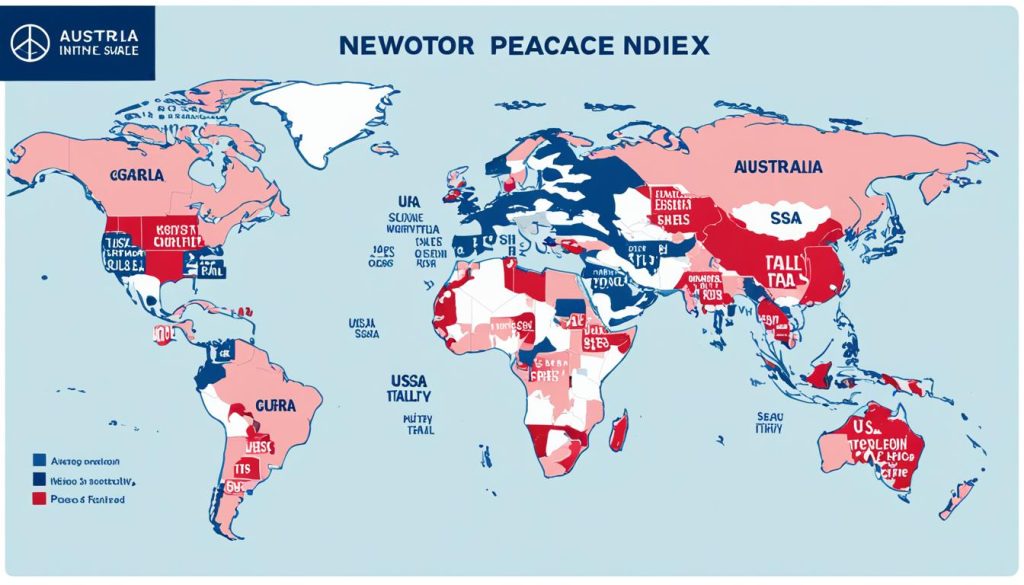
The factors of safety and security are crucial in judging how livable a country is. They’re watched over by organizations like the one behind the Global Peace Index (GPI). The GPI is vital for understanding safety in society. It also looks at militarisation levels and conflict amounts. Countries scoring low on the GPI are seen as peaceful, making them safer for people.
- The link between few crimes and feeling safe at home.
- How good law enforcement and legal systems boost national security.
- The work done to fix conflicts that affects the GPI’s ratings.
Security checks often look at murder rates and violent crimes. A low murder rate suggests a safe place. But a high rate could signal big problems in society.
- Analyse national crime statistics to establish baseline security levels.
- Investigate historical trends to discern improvements or deteriorations in public safety.
- Consider the broader implications of national security measures on overall peace and stability.
Talking about safety includes discussing what governments do to make places secure. This might be preventing crime or starting community programmes to make people feel safe.
Climate Comparisons and Environmental Challenges

When we look at the climates of Australia and Italy, we see big differences. In Australia, the weather can get quite extreme. This affects how people live in both cities and the countryside. Italy, on the other hand, has more gentle weather.
Day-to-Day Weather Effects
Everyday life in Australia and Italy is influenced by their weather. Australia often sees temperatures around 24.3°C. Italy’s weather is cooler, usually around 19.0°C. These differences shape how people adapt, like the use of air-conditioning in Australia.
In both places, weather also affects what people wear. Humidity and temperature changes mean everyone has to be ready for anything.
Adaptation to Climate Change
Today, fighting climate change is crucial. Australia, being very dry, faces unique problems like droughts and bushfires. Italy focuses on protecting its coasts and wildlife from the sea and heat.
- Climate change adaptation in Australia includes water conservation efforts and infrastructural changes.
- Italy implements policies focusing on sustainable agriculture and protection of marine ecosystems.
Both countries are working hard to tackle climate change. They want to protect their natural beauty for the future.
Cost of Living and Income Levels
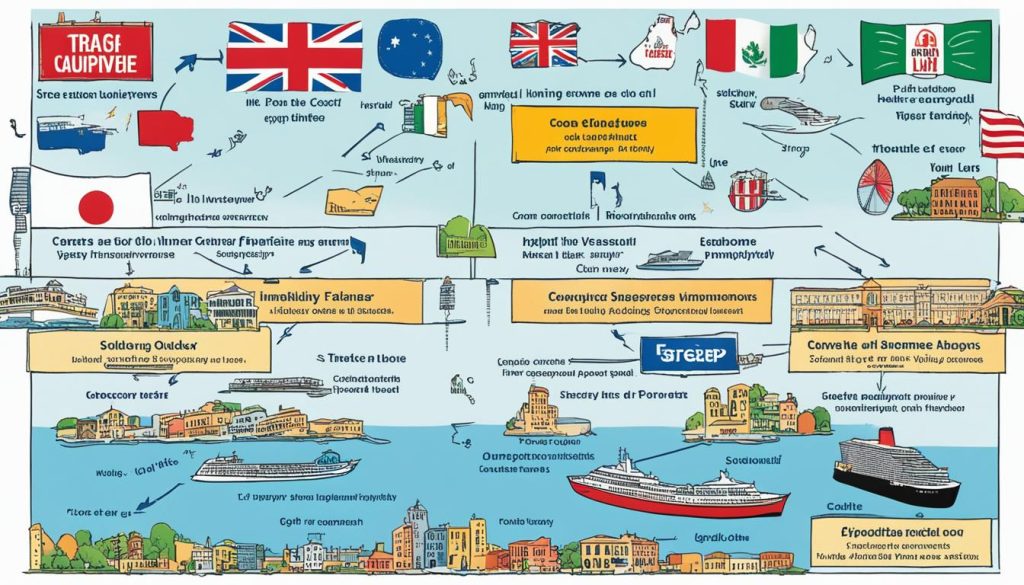
The cost of living index and average wage tell us how well an economy and its people are doing. In Australia, the cost of living is quite high at 106.99%, much more than Italy’s 75.70%. This index compares countries to the United States.
Talking about salaries, there is a big difference. Australia’s average wage is USD 66,054, while Italy’s is USD 34,071. These figures show how much people can spend and save in each country.
- Cost of living affects your daily life and choices.
- Average wage determines how much you can save and your financial security.
- Financial well-being includes both your lifestyle and your financial comfort.
Knowing about these economic indicators is key. They help people deciding to move, businesses setting salaries, and officials aiming to boost the economy.
The Housing Market and Real Estate Prices

In studying the Australian housing market, we see a clear link between property prices and economic health. Investing in real estate continues to attract interest. This shows strong consumer confidence. Yet, the market’s high prices can make it hard for many to afford homes. This situation creates a complex picture of opportunity coupled with economic challenges.
Australia’s Market Dynamics
Australia’s property market shows energy, especially in big cities where prices keep rising. Despite global economic challenges, the demand for houses grows. This shows the market’s strength. However, these rising prices spark debate about how easy it is for locals to buy homes in the long term.
Real Estate Trends in USA and Italy
In the USA, real estate trends significantly influence the global market, attracting international investors. On the other hand, the Italian market shows unique trends. Here, local preferences and differences between regions shape the market. In Italy, the property scene in city centres contrasts with rural areas. This shows the diverse nature of global real estate trends.
- Global economic factors impacting property prices
- Investment potential in various regions
- Affordability and accessibility for local residents
Examining global real estate reveals unique market characteristics. From Australia’s growth to Italy’s diversity, each market follows its path. Investors and homebuyers face a world of opportunity and challenge. They must be cautious yet hopeful, guided by trends that shape global property prices.
Education Systems and Opportunities
At the centre of nationwide progress is the push for better education quality. This effort leads to vast improvements in scholastic achievement. Australia and Italy stand out for investing in education. This ensures students enjoy top-notch academic facilities. Such investments show a commitment to excellence. They also highlight the many chances students have across different fields.
- Both countries offer an academic setting that boosts understanding and critical thinking. This has placed them high in global education rankings.
- They focus on top-tier academic facilities, including well-stocked libraries and advanced research centres. These contribute to a superior learning experience.
- Students have many chances to shine, through programmes that build a broad skill set and further scholastic achievement.
In a world where education quality ties to future success, Australia and Italy are making big changes. They help students through every phase of their learning journey. This highlights how crucial education is for personal growth and the advancement of society.
Cultural Richness and Language Diversity
Welcoming many cultures into a nation improves its society greatly. Language diversity helps us connect more deeply across communities. This highlights the priceless value of cultural richness. In places like Australia and Italy, different languages tell a tale of historical meetings. They give us a glimpse into the shared cultural heritage that shapes societal values.
Living as a Multilingual Society
In Australia, many languages are spoken, including English, Mandarin, Arabic, and Vietnamese. This shows how the country is becoming more language diverse. Italy also has many languages. These include Italian and local languages like Sardinian and Friulian. Having many languages is key to cultural and social exchange in a multilingual society.
Australia shows its dedication to being culturally rich and inclusive. It celebrates the harmonious living of diverse language groups. In Italy, regional languages are embraced, while Italian unites everyone. This enriches the nation’s culture.
Valuing Cultural Heritage
A country’s commitment to its cultural heritage shows how much it values its history and traditions. Australia values a multicultural society where different religious beliefs mix. This shapes the country’s values. Italy, with its strong Christian presence, also prides itself on its cultural heritage.
Both countries deeply respect their cultural heritage, despite their religious differences. Australia’s Indigenous and immigrant cultures are celebrated just as Italy cherishes its historical and religious traditions. These nations are defined by a deep respect for the stories and beliefs passed down through time.
Pursuing Recreation and Leisure Activities
Enjoying your free time is more than a weekend activity. It’s key to improving your rest period. Countries show they care for public health by offering fun places. Both Australia and Italy have done well in providing many options for people.
In Italy, you can explore ancient theatres and huge museums. Places like the vineyards in Tuscany or Venice’s canals show Italy’s beauty. These spots offer a mix of learning and relaxation.
Australia offers a different kind of fun with its outdoor adventures. You can surf on beautiful beaches or walk through diverse parks. These activities suit thrill-seekers and those who want quiet moments in nature.
- Cycling around the iconic Sydney Harbour
- Exploring the Great Barrier Reef through snorkelling tours
- Taking bushwalks in the Blue Mountains for breathtaking views
Florence’s architecture or Australia’s outback offer memorable moments. These experiences teach us history, help us relax, and bring people together.
By providing a range of fun activities, these countries show their commitment to quality leisure time. Making such experiences available helps improve life and brings culture and wellness together.
Conclusion
After looking closely at the details, we see the big picture of life in Australia, Italy, and the USA. The rise in people moving countries makes knowing about living standards important. We’ve looked at the economy, healthcare, safety, and schools, as well as culture, in these places. This helps anyone thinking about living abroad understand what to expect.
Australia has a high cost of living but offers top-notch health services. The USA is great for job opportunities but healthcare quality varies. Italy boasts rich culture and is more affordable. This info helps those thinking of moving abroad weigh their options. It gives a clear view of what life is like in these countries.
The world is getting more connected and people’s lifestyle choices are becoming more complex. This study gives future expats and global thinkers the facts they need to make smart choices. Whether it’s for the economy, culture, or high living standards, this guide helps navigate international living’s challenges.



